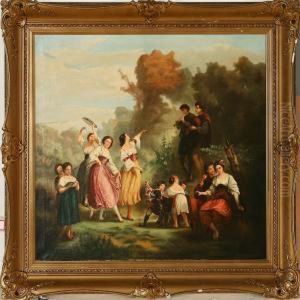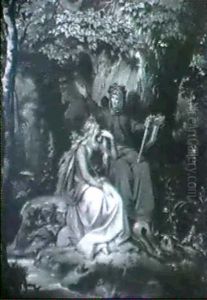Josef Manes Paintings
Josef Mánes was a significant figure in Czech art, embodying the spirit of national revival and Romanticism in the 19th century. Born on May 12, 1820, in Prague, he was part of a distinguished family of artists that profoundly influenced his career path. His father, Antonín Manes, was a respected painter, and his brothers, Quido and Amalie, were also involved in the arts. This environment nurtured Josef's talent from a young age, leading him to study at the Academy of Fine Arts in Prague. His education was further enriched by travels to Germany, Italy, and France, where he absorbed the essence of contemporary artistic movements, though his heart remained rooted in the traditions and folklore of his homeland.
Mánes's oeuvre is diverse, encompassing painting, illustration, and design, yet it is his dedication to capturing the Czech people, their traditions, and landscapes that distinguishes his legacy. He sought inspiration in the rural life of Bohemia, depicting scenes filled with authenticity and a romanticized view of the past. One of his masterpieces, the cycle of the seasons for the Astronomical Clock in Prague, showcases his skill in combining detailed observation with a poetic interpretation of nature and time, cementing his status as a national artist.
Throughout his career, Mánes was actively involved in the cultural life of Prague. He contributed to the revival of Czech arts and crafts and was a member of various artistic societies. His work not only reflects the Romantic fascination with nature, history, and folklore but also embodies the Czech national awakening of the 19th century. Despite facing financial difficulties and health problems in his later years, Mánes continued to work until his death on December 9, 1871, in Prague. Today, he is remembered as a pivotal figure in Czech art, whose works continue to inspire a sense of national pride and cultural identity.












